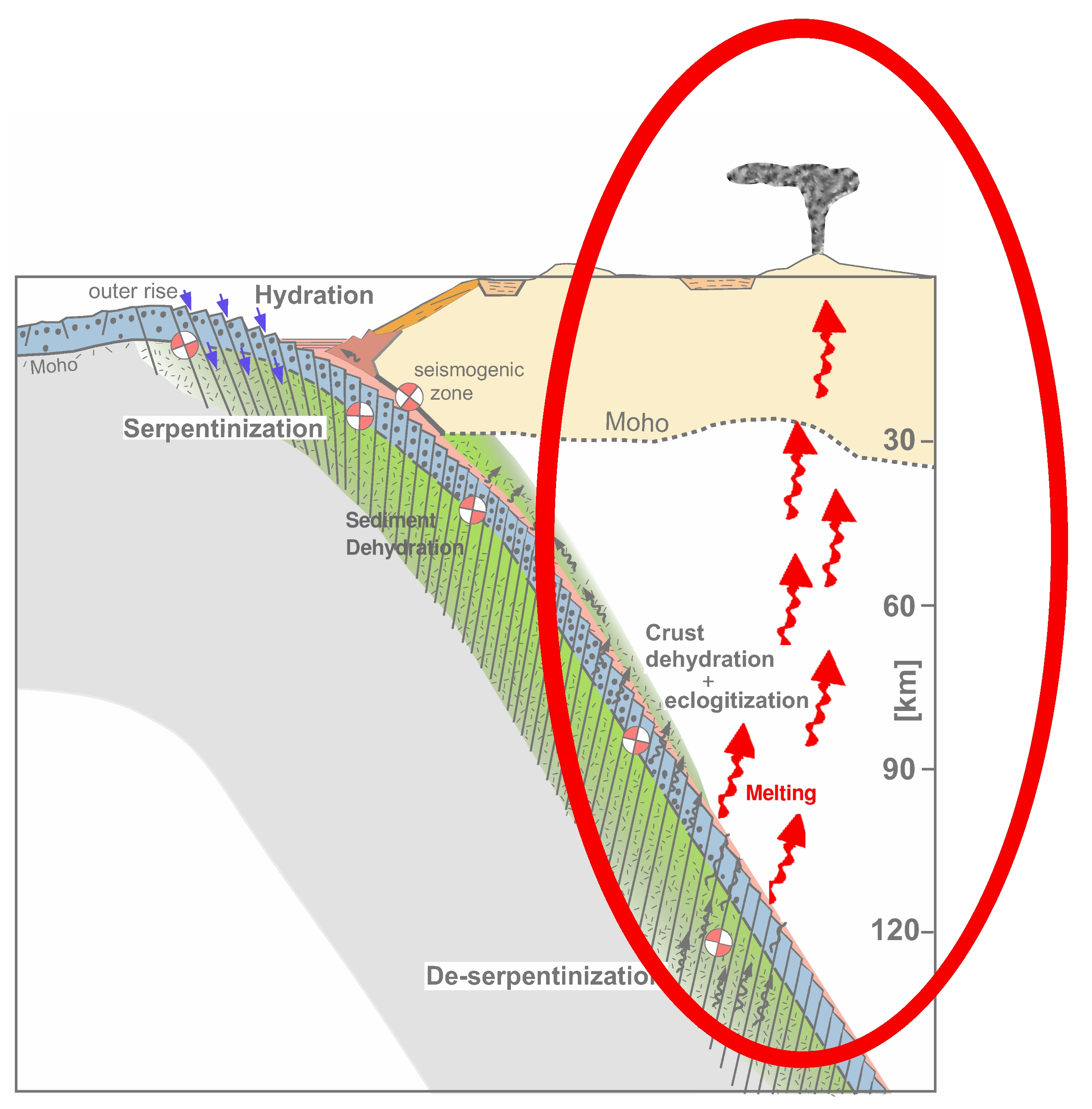 Web Content Display Web Content Display
Overview Subproject C2
Subproject C2 deals with the transport of a large variety of chemical elements from the mantle to the Earth's surface at convergent plate boundaries (subduction zones). At these plate boundaries, an oceanic plate sinks beneath another plate carrying marine sediments, igneous ocean crust and lithospheric mantle containing fluids (primarily seawater) deep into the Earth's mantle. At depths of ~100-200 km, fluids and melts from the downgoing plate rise into the overlying mantle wedge, reducing the melting point below the actual mantle temperature, causing melting and the generation of magmas. As the magmas rise to the surface through the mantle and the crust, they cool and crystallize a variety of minerals such as olivine. Removal of some of these crystals causes changes in the the magma's composition. Upon reaching the Earth's surface, the magmas are erupted as lava flows or explosively as tephras. Our project is largely interested in volcanic gases that can influence the Earth's climate over both long and short time-scales, such as CO2, sulfur, chlorine, and fluorine, when they enter the Earth's atmosphere. It is important to evaluate the role of natural processes affecting the Earth's climate in order to assess adequately the influence of humans on our climate. Another important element that we investigate in this project is water. Water not only triggers melting in the Earth's mantle but also acts as a driving force for volcanic eruptions, which can cause hazards for nearby populations, for example in countries along the Pacific margin of Latin America.
Fig.1: Profile across a subduction zone. Reseach topic of subproject C2 are the material transfer from the subducting slab through the mantle wenge to the Earth's surface. |
 Events Events
Kieler Wissenschaftler fühlen den 'Puls der Erde' Wie funktioniert die Recyclingmaschine der Erde?Nach elf Jahren endet der Kieler Sonderforschungsbereich 574 zu Subduktionszonen Final colloquium of SFB 574 Teilprojekt ÖffentlichkeitsarbeitMEERESFORSCHUNG FÜR MICH UND DICH |
|
©SFB574 // Wischhofstrasse 1-3 // D-24148 Kiel // T. +49 (0)431 600 1413 // elange [AT] geomar.de






